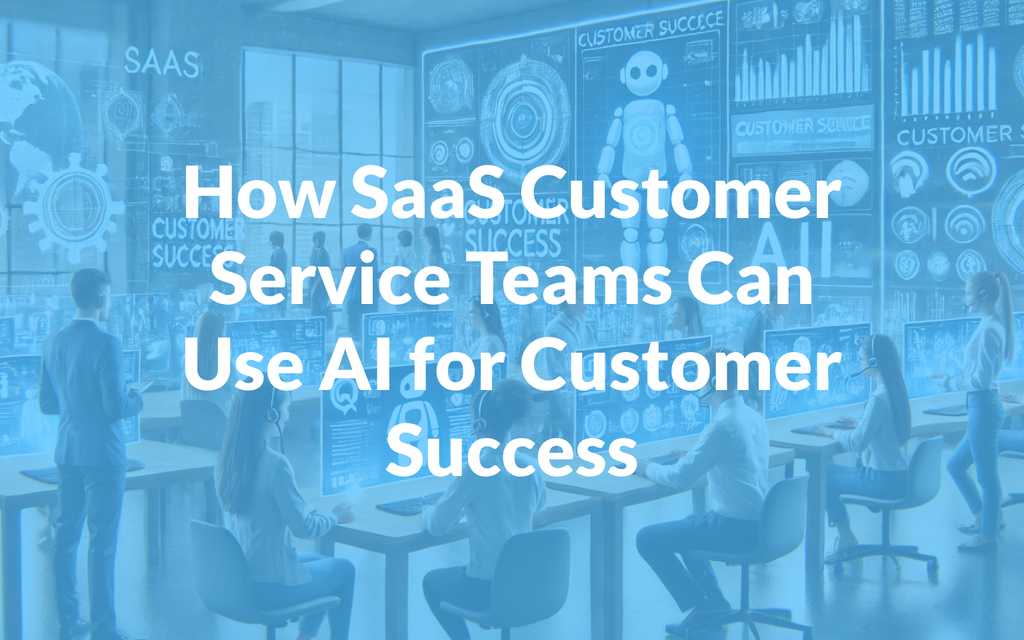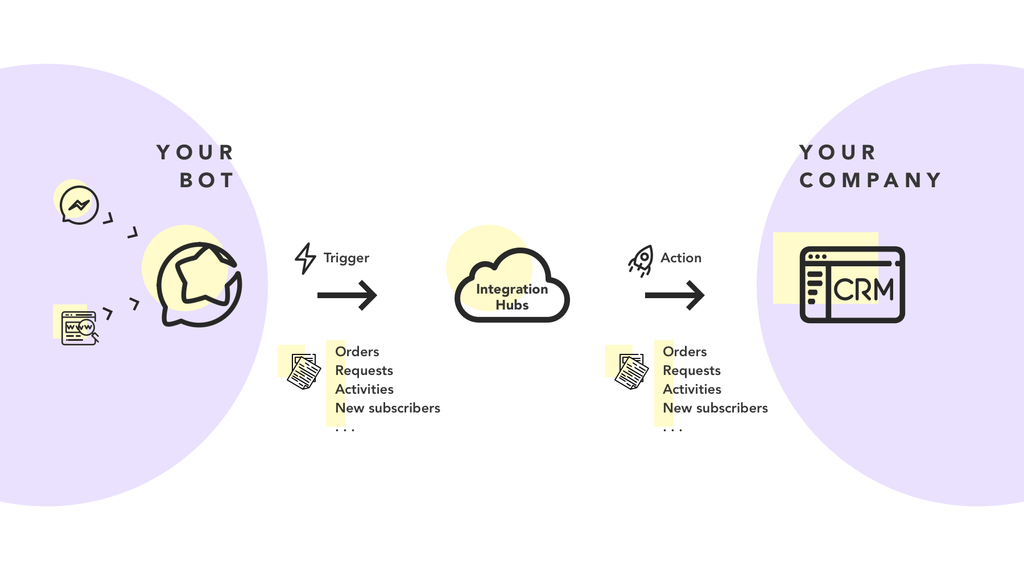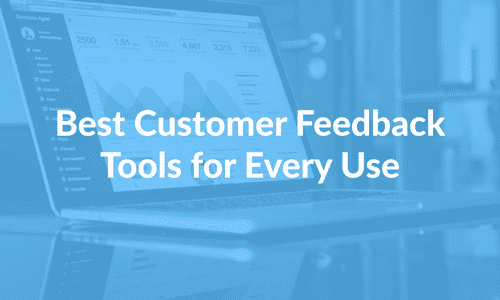SaaS (Software as a Service) thrives on innovation, which enables top-notch customer experiences and drives success. One such transformative approach is to leverage Artificial Intelligence (AI).

Now, AI isn’t just a futuristic concept; it’s a practical, powerful ally in elevating customer service to new heights.📈
Gartner’s study predicts businesses that use AI for multichannel customer support. The report mentions that by 2025, customer service organizations embedding AI in their multichannel customer engagement platform will elevate operational efficiency by 25%.
Moreover, according to IBM, automating support with chatbots can handle up to 80% of routine customer queries. It leverages predictive analytics to boost customer retention rates by significant margins. This shows that the AI’s role in SaaS is expansive and profound.
Whether you’re a startup or an established SaaS business, switching to AI will require adopting customer success software. Such a tool will remain focused on providing intuitive usability, data-driven insights, and seamless integration with your existing systems.
First, Let us explore the key AI advantages that SaaS customer teams can experience.
Supercharging Response Times with AI Chatbots
AI chatbots are super assistants that are always ready, 24/7, to answer customer queries. They are like customer service superheroes who can instantly handle all those frequently asked questions.

There are plenty of customer-facing issues that chatbots can address without much fuss.
Like, need to know about your subscription? Bam! The chatbot got it.
Wondering about how to set up a feature? No problem, the chatbot is on it.
This means customers get their answers quickly and smile because of that quick help. 😊💨
But wait, you can do much more with AI chatbots!
Integrate Chatbots with Your CRM
Connect your AI chatbots to your Customer Relationship Management (CRM) system. You can start your generative AI journey by building a custom chatbot with customer data access. It can be trained to provide personalized responses based on the customer’s history and preferences.

What does it mean?
Well, your chatbot will store customer data, so anytime a similar query comes in, it can provide a standard response to customers quickly🧠💼
You may want to get in touch with the revenue team before you integrate a chatbot in the CRM because the revenue team is a customer-facing group so they know what language prospects are speaking, what are their common pain points and what common solutions they are looking for.
It’s also important to know the revenue lifecycle management for this as it involves knowing the customer lifecycle from start to finish. Based on these raw data, you can apply NLP and program your chatbot to speak the language that your customers are looking for.
Use Natural Language Processing (NLP)
The whole idea behind using AI chatbots is to make it sound more like us humans. And this is why the emphasis is on NLP.

Implementing chatbots with advanced NLP capabilities helps them understand human language more accurately, leading to more relevant and helpful responses. 🗣️👂
Ideally, you’d need to pick up the NLP engine from Google’s Dialogflow, IBM Watson, or OpenAI’s GPT models that suit your needs.
Next, you’d feed your NLP engine with real customer conversations. This data forms the foundation of your chatbot’s learning. Use the conversational data to train your NLP model. This involves feeding the data into the NLP engine so it can learn from patterns and contexts in human dialogue.
Here, you can use chat templates that provide a structured way for the chatbot to handle common queries and scenarios.
Check out this sample template.

Monitor and Analyze Chatbot Interactions
Review conversations between customers and your chatbot regularly. This monitoring helps identify areas for improvement, ensuring that the chatbot continues to learn and become more effective over time.
Here, you’d use the chatbot analysis tool.
What does it do?
It reveals patterns and trends you might miss with a basic review. This is like giving your chatbot interaction a microscope analysis. 🔍📈
Crafting Personalized Customer Journeys with AI
Customer success requires pivoting from a cookie-cutter approach to providing a more tailored experience.
Therefore, tailoring customer journeys with AI requires analyzing extensive customer data wherein AI helps segment audiences and predict their needs.
This will enable delivering customized interactions and solutions to boost customer satisfaction and foster loyalty.
Here are some of the best ways to offer an exclusive journey for each customer through AI.
Understanding Customer Data
First up, AI thrives on data. So, consider diving into your customer data to understand their preferences, history, and behavior.
Let us understand this better with an example.
AI-based customer success data will examine past purchases, service interactions, browsing behavior, and feedback. Understanding these data points helps AI to create customer profiles, enabling customer service teams to tailor their interactions more precisely, leading to a more relevant and engaging customer experience.
AI-based chatbots can provide and examine customer data such as past purchases, service interactions, browsing behavior, and feedback. Your marketing team can then leverage AI-driven systems to create detailed customer profiles.
What happens next?
Such data-backed understanding is pivotal for marketing teams. It allows them to tailor their campaigns and strategies more effectively, ensuring they resonate deeply with the target audience. 🎯📊
They can integrate the AI-analyzed customer data with their marketing reporting dashboards to keep an eye on the KPIs that matter. It allows for measuring customer lifecycle value (CLV), customer acquisition cost (CAC), retention rates, and satisfaction scores. 🎯📈
Again, this will feed the customer support team to tweak communication strategies on the fly, ensuring they’re always in tune with what customers want.
Bottom line?
Diving deep into customer data with AI isn’t just a boost for customer service; it’s a treasure trove for marketing insights. It’s all about making strategies smarter, more customer-focused, and super effective!
Predictive Personalization
Providing customer success is a challenging task. Your customer service team must stay ahead of the curve by predicting what your customers need before they ask.
Thankfully, AI can analyze past interactions and behaviors to suggest products, services, or solutions, such as help articles, that are just right for them.
Again, a quick example.
If a customer frequently explores a particular service feature, AI can prompt customer service representatives to offer detailed information or additional related services. Such a proactive approach enhances customer satisfaction and loyalty that drives toward advocacy.
Continual Learning for Improved Interactions
Customer service teams can use AI systems that are inherently designed to learn from each interaction, becoming more sophisticated over time.
Continuous customer interaction analysis and feedback feed the AI models to provide increasingly accurate and relevant personalization.
It means the service experience improves continuously, keeping pace with changing customer preferences and behaviors.
Maximizing Efficiency with AI-Driven Workflow and Resource Allocation
Leverage AI to intelligently distribute queries based on expertise, workload, and availability that help your team operate efficiently.
With such smart allocation, you maximize your team’s strengths while ensuring each customer receives the most knowledgeable and timely support.
Embracing AI-driven workflows transforms customer service into a dynamic, responsive, efficient powerhouse. All these fuels customer satisfaction and success.
Here are some ways you can use AI for customer success to maximize resource utilization.
Workload Balancing
Machine learning is a part of AI algorithms that can supervise learning models. These models can analyze historical customer service data to identify patterns and trends. For example, a Random Forest algorithm could be trained on past customer queries and resolutions to predict which team member best suits a particular query type.
This way, AI in customer service helps monitor the current workload of each team member.
Let’s get a better idea by understanding how it works in real-time. What if only a few customer support executives get too many queries?
It’s better to have an AI system to redistribute the load to others with more bandwidth (instead of manually configuring it). This equally allocates resources for customer queries to maintain high morale and efficiency.
Integrating with Other Tools and Platforms
AI systems can integrate seamlessly with other tools and platforms used by your team, like CRM, helpdesk software, proposal makers, and communication tools. Such integration offers a more holistic view of resources and needs, making AI’s resource allocation even more effective. It’s like connecting the dots to see the bigger picture.
Feedback Mechanisms for Adjustment
Incorporate feedback tools that bring in mechanisms for team members to provide input on the AI’s allocation decisions.
What happens when you have human feedback?
In truth, human feedback helps refine the AI algorithms to ensure they remain aligned with the team’s needs and realities. These conversations are useful since both humans and AI learn from each other.
Predictive Resource Allocation
Analyzing trends and patterns in customer queries through AI can help predict high-demand periods and suggest staffing levels or workflow adjustments.
If your data shows a spike in queries at the end of each month, you can proactively allocate more resources during that time.
Chatbots for Initial Query Handling
AI chatbots remain at the frontline of customer interaction and can transform how you cater to their queries.
Let’s simulate it in a real-world scenario.
AI tools for customer interactions, like Watson Assistant, help streamline initial query handling and provide personalized, accurate responses.
The result?
Significantly enhancing customer satisfaction and efficiency.
Your AI-enabled chatbots with advanced NLP and machine learning can efficiently manage routine questions about product features, troubleshooting, or account information.
In turn, you can seamlessly collect essential information and, if necessary, escalate complex issues to human agents with all the relevant context.
This approach speeds up response times and ensures that customer queries are handled with the appropriate level of expertise from the start.
Enhancing Customer Experience with AI-Driven Personalization
In the competitive world of SaaS business, every customer interaction counts. And this is where AI-driven personalization can chip in the necessary innovation.
The customer service teams can deliver uniquely tailored experiences that resonate with each user.
Many AI tools and algorithms can automate and enhance your customer by analyzing users’ interaction history, preferences, and communication style.
For instance, tools like Drift use AI to power their chatbots to engage in customer conversations. It offers personalized responses and support based on the customer’s history and behavior.
How would customers benefit here?
Personalized engagement would make customers feel valued and understood to enhance their satisfaction and loyalty to the product. This approach can transform your customer service from a mere support function into a pivotal element of the customer experience, deeply rooted in understanding and empathy.
Here’s how you can use AI-based chatbots for SaaS product personalization.
Customized Product Recommendations
Adopting AI for customer service will allow for analyzing customer behavior and using the collected data to suggest relevant products or services.
An example?
Imagine a customer frequently using a particular feature of your software. With AI-based recommendations, it offers complementary features or upgrades that enhance their experience. This adds value for the customer and opens cross-selling and upselling opportunities.
Sentiment Analysis for Empathetic Responses
With sentiment analysis, AI can gauge the customer’s mood from their text or voice communication. The NLP-embedded AI can analyze if the customer is frustrated.
If so, AI can act more humanely, adopt a more empathetic tone, and may even escalate the issue to a human agent. Such language-based sensitivity can go a long way in defusing potentially negative situations and improving the customer experience.
Intelligent Problem Solving
Pivoting to customer success requires predicting a user’s problems and proactively offering solutions. For instance, if a user repeatedly encounters an error, AI suggests relevant help articles or offers to connect them with support.
The benefit?
It will reduce frustration and improve the user experience so that they stick to your product/services.
Moreover, once the AI tool you use identifies a potential issue, it can proactively reach out to users who might encounter the same problem. This enables offering guidance through in-app messages, email tips, or directing them to helpful resources.
Wrapping Up
So far, we have covered some major ways in which SaaS customer service teams can use AI for customer success. The innovation in AI for SaaS customer service may act as a transformative force.
From chatbots that deliver instant responses to predictive analytics anticipating customer needs, AI is redefining customer satisfaction and efficiency benchmarks. The key takeaway is how to adapt the AI to personalize customer experiences and streamline operations for enhanced engagement.
As a SaaS company, using AI for customer success is about staying ahead of the curve and setting new standards in customer service excellence.
Now is the time to embrace these AI-driven strategies to create a more intuitive, responsive, and engaging world for our customers.

